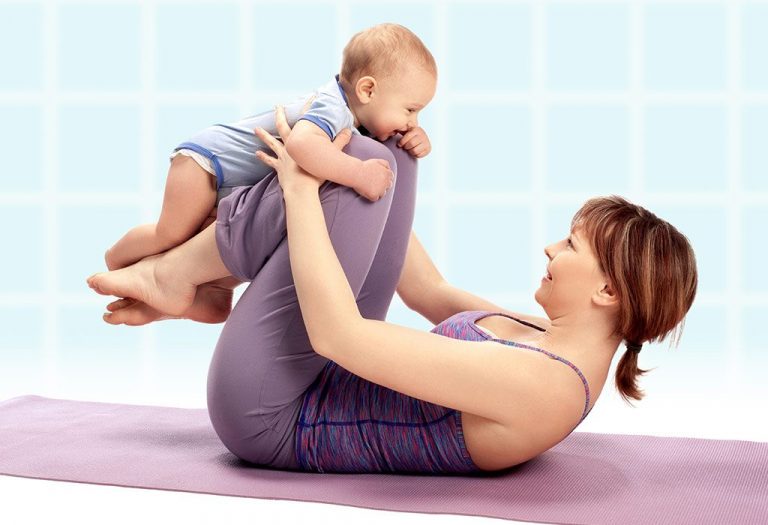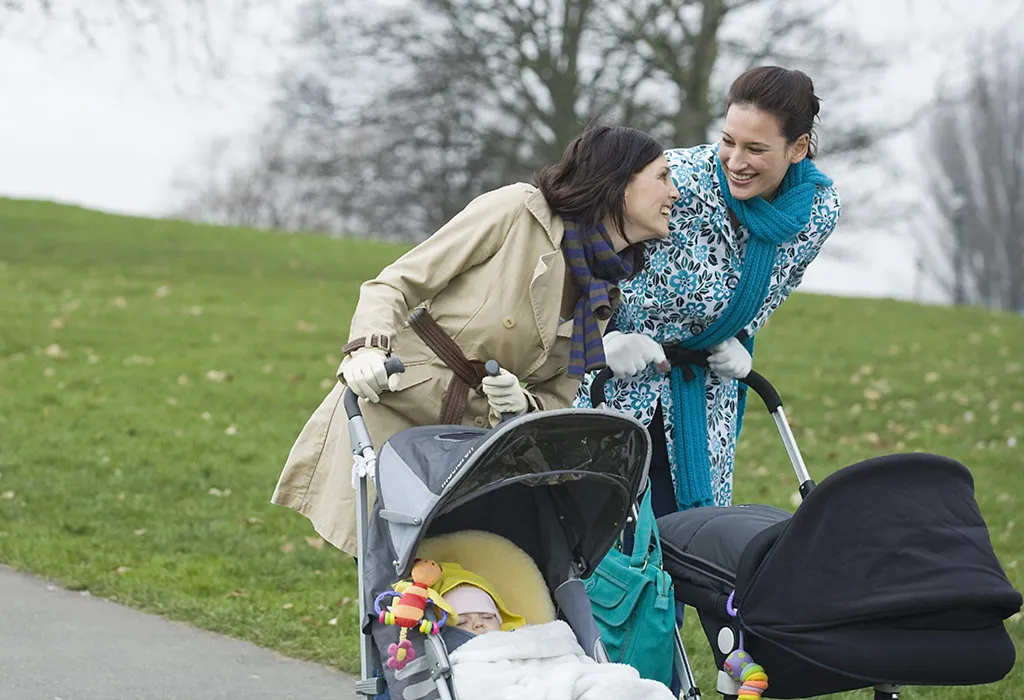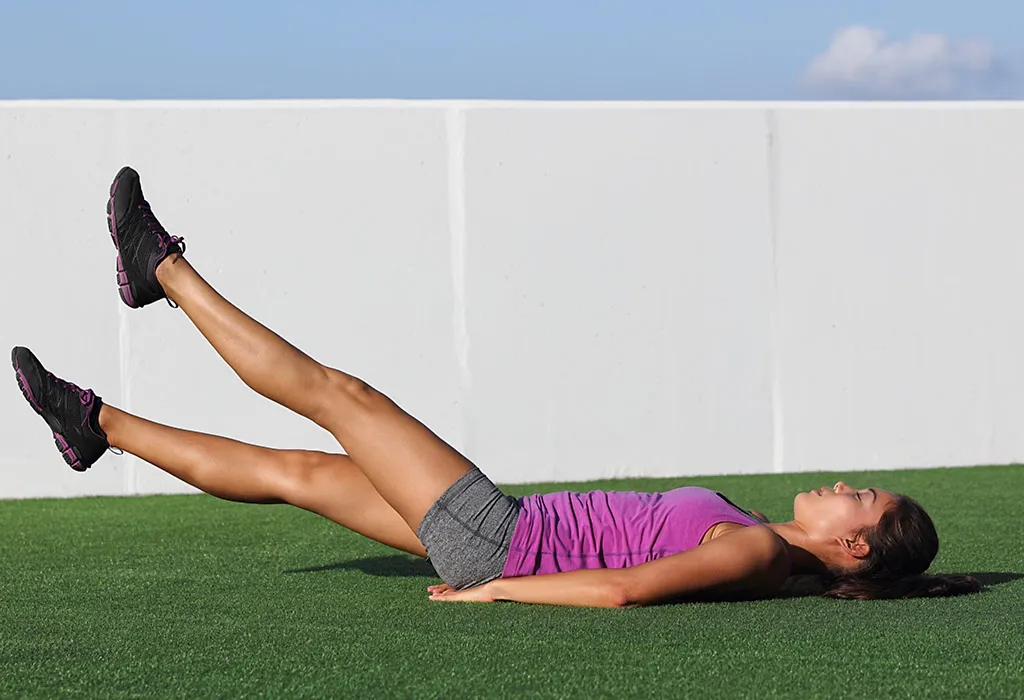Best Postpartum Stomach Exercises to Reduce Tummy After Delivery

Every new mom considers going back to exercise after the birth of her baby. It is completely natural for a mother to gain weight during pregnancy, and it is also important for the new mom to incorporate some form of exercise in her daily routine post-baby as it can help her in several ways, one of which is losing the added pregnancy weight. Contrary to popular belief, though, it’s not as tough to shed the extra weight with some postpartum stomach exercises after giving birth! Simple exercises for flat tummy after delivery and moderate control of the diet can ensure that you get back to feeling lighter and better.
How Long Does Belly Take to Shrink After Giving Birth?
The time it takes for the belly to shrink after giving birth varies for each woman, but generally, it can take anywhere from a few weeks to several months. Immediately after delivery, your uterus begins to shrink back to its pre-pregnancy size, a process that takes about six weeks. However, losing the “baby belly” entirely can take longer due to factors like your pre-pregnancy size, weight gain during pregnancy, diet, post delivery exercises to reduce tummy, and overall health.
When Can You Start Tummy Exercises After Giving Birth?
You can typically start tummy exercises about six weeks after giving birth, provided you have your healthcare provider’s approval. This recommendation applies to women who have had a vaginal delivery without complications. For those who have undergone a C-section or had other complications, it might be necessary to wait longer before beginning any exercise routine.
Benefits of Post Natal Belly Exercises
Post-natal belly exercises offer numerous benefits for new mothers, helping them regain strength and improve overall well-being after childbirth. Here are some key benefits:
- Strengthening Core Muscles: Post-natal exercises target the abdominal muscles, helping to restore strength and function in the core, which can be weakened during pregnancy and childbirth.
- Improving Posture: Strengthening the abdominal and back muscles can improve posture, which is often compromised during pregnancy due to the additional weight and changes in the body’s center of gravity.
- Reducing Back Pain: By strengthening the core and improving posture, these exercises can help alleviate lower back pain, a common issue for new mothers.
- Boosting Energy Levels: Regular physical activity, including post-natal exercises, can increase energy levels and reduce fatigue, helping new mothers manage the demands of caring for a newborn.
- Enhancing Mental Health: Engaging in post-natal exercise can significantly benefit mental health by triggering the release of endorphins, which help enhance mood and alleviate symptoms of postpartum depression and anxiety.
- Aiding Weight Loss: Incorporating belly exercises into a post-natal fitness routine can help reduce abdominal fat and overall body weight, promoting a return to pre-pregnancy fitness levels.
Top 14 Exercises to Reduce Belly Fat After Pregnancy
Before you start exercising, it is important to remember that your body will require six to eight weeks to recover from the stress of labour and birth. Starting exercise too soon after delivery will delay the recovery process due to additional stress and make you feel tired. It is essential that you consult your doctor and understand the various changes your body has gone through during pregnancy, along with the precautions you will need to take to get back in shape in a healthy manner.
Listed below are a few post-delivery exercises to reduce your belly fat. Following these postnatal stomach exercises on a daily basis will help you achieve your goals in a consistent manner and leave you happy and healthy.
1. Walking
Walking is an easy workout and is the best way to warm up your body and set it up for more intense exercise. You can start with a leisurely stroll at first and gradually move to brisk walking over a period of a few days. Try walking for 15 minutes every day for at least 5 days a week and increase the walking time gradually. You can take your baby along in a stroller!
2. Basic Stretching and Twisting
Once your body is used to basic walking, you can proceed to basic stretching and twisting. Stretching and twisting will start the process of strengthening and toning your muscles.
3. Pelvic Exercises
Pelvic exercises such as kneeling help tone your tummy and strengthen your abs. To perform the exercise,
- Start on all fours with your arms straight down, palms touching the floor.
- Your back should be relaxed and not curved or arched.
- Pull your buttocks forward as you inhale, tilting your pelvis and rotating your pubic bone upward.
- Hold for three seconds and go back to the original position. Make sure that your stomach muscles are completely relaxed.
4. Bridging Exercises
These exercises will help tone your tummy, bottom, and thigh muscles. To perform this exercise:
- Lie on your back (on the floor, preferably on a yoga mat), bend your knees and slide your feet closer to your buttocks.
- Take a deep breath. While exhaling, tighten your stomach and lift your bottom as high as you can, and hold the position for five to ten seconds. Breathe normally during this time.
- Gradually, lower your bottom to the floor again and rest for three seconds. Repeat this exercise 10 times.
5. Hip Exercises
Doing simple hip exercises will help in toning down the hips and providing strength to the stomach. For this exercise:
- Lie down on a mat on the floor. Put both your hands perpendicular to your body by stretching them out.
- Next, bend your legs, pull them up, and turn them to the left side while your upper body turns to the right side.
- Hold this position for five seconds and repeat this exercise 10 times on each side.
6. Sit-Ups
Sit-ups will tone your upper legs and help to cut down the weight on your lower stomach. Start with a few gentle sit-ups initially and proceed to more rigorous sit-ups gradually.
7. Yoga
Yoga is a complete package of exercises for the body and the mind. Yoga is one of the best exercises after pregnancy to reduce your stomach fat. Habituate yourself to perform yoga early in the morning to rejuvenate and energise yourself for the rest of the day. You can practice yoga at home or join classes so that it becomes a part of your routine.
8. Pilates
Pilates strengthens your body and makes it more flexible and balanced. The routine of this exercise involves a series of movements and change in positions that will help improve your body strength and coordination. Ensure that you breathe deeply and relax while performing this exercise.
9. Aerobics Training
Aerobics is an effective option if you want to lose excessive fat gained during pregnancy. Consistent aerobic training will help you burn excess calories and stabilise your metabolism. Make sure to start your aerobic session slowly and increase the intensity as you proceed. Aerobics must be done at least two to three times a week.
10. Abdominal Exercises
- Abdominal Crunches: Doing crunches is an effective way of reducing post-pregnancy belly fat. Start off slow and do not strain yourself too much. If required, perform the exercise under professional supervision. You can start with 5 crunches a day and gradually increase the number.
- Flutter Kicks: For this exercise, lie on your back with your hands behind, lift your legs above the ground and make quick but gentle motions as if swimming on your back. Flutter kicks will help you lose extra fat in your calves and thighs as well.
- Swimming: Swimming helps lose weight and tone body muscles and is refreshing at the same time. You should go swimming only after 6 to 7 weeks after delivery to avoid a chance of infection.
11. Leg Raises
Leg raises are effective for targeting the lower abdominal muscles and help in toning them. This exercise strengthens the lower abs, which can help in reducing belly fat post-pregnancy. To perform this exercise:
- Lie flat on your back with your hands at your sides.
- Lift both legs off the ground to a 90-degree angle.
- Slowly lower your legs back down without touching the floor and then lift them again. Repeat 10-15 times.
Starting with fewer repetitions and gradually increasing them can prevent strain.
12. Plank
Planking is excellent for building core strength and stability. Planks engage multiple muscle groups simultaneously, including the abs, back, and shoulders, providing a comprehensive core workout. To perform a plank:
- Lie face down on the floor.
- Lift your body on your toes and forearms, keeping your body straight.
- Hold this position for as long as you can, gradually increasing the time as you build strength.
Performing these exercises on a regular basis will help you get back into shape. A simple 25-30 minutes of daily exercise along with a nutritious diet will work wonders for your body and your mind.
13. Side Plank
The side plank is great for strengthening the oblique muscles, which are part of the core. To perform this exercise:
- Lie on one side with your legs stacked.
- Lift your body onto one forearm and the side of your foot, keeping your body in a straight line.
- Hold this position, then switch sides and repeat.
- This exercise helps in toning the sides of your abdomen, enhancing overall core stability.
14. Bicycle Crunches
Bicycle crunches are effective for working both the upper and lower abs. To perform this exercise:
- Lie on your back with your hands behind your head and legs lifted.
- Bring one knee towards your chest while simultaneously twisting your torso to bring the opposite elbow towards the knee.
- Alternate sides in a pedaling motion.
- This dynamic exercise mimics the pedaling motion of a bicycle and effectively targets the abdominal muscles, helping in burning belly fat.
Simple Precautions to Take When Exercising Post-Pregnancy
When starting an exercise routine post-pregnancy, taking the right precautions is crucial to ensure a safe and effective recovery. Here are some simple precautions to keep in mind:
- Always consult your doctor before starting with any exercise – It is important that you rest for about 6 weeks after delivery so as to let your body heal, and you may need to rest for a lot longer if you’ve had a c-section delivery. Regardless, do not start with an exercise routine without consulting your doctor.
- Stay hydrated at all times – Remember that you are still breastfeeding your little one, and your exercise routine should not in any way affect your milk supply. Drink plenty of water during and after exercise.
- Do not push yourself too hard – Some women may feel the need to rush into their pre-pregnancy body and may resort to fad diets or hard exercises to achieve their goals – that can be dangerous for your body as you have most likely not healed completely yet. Remember to start off slow and immediately let go if you find a particular exercise tough.
- Rest – Take enough time to recuperate from any exercise as your body will require more time to relax its muscles.
FAQs
1. Can I wear a postpartum belly wrap while exercising?
Yes, wearing a postpartum belly wrap while exercising can provide additional support to your abdominal muscles and lower back. However, it’s important to ensure that the wrap is not too tight and does not restrict your breathing or movement. Always consult with your healthcare provider before using any postpartum support garments during exercise.
2. How can I modify exercises if I experience pelvic pain postpartum?
If you experience pelvic pain postpartum, modify high-impact exercises to low-impact ones. For example, replace running with brisk walking or swimming. Avoid exercises that put excessive pressure on the pelvic area, like heavy lifting or high-intensity interval training (HIIT). Incorporating pelvic floor exercises and gentle stretches can help alleviate pelvic pain and support recovery.
3. How can I tell if I’m overdoing it with postpartum exercises?
Signs that you might be overdoing it include persistent pain, increased bleeding or discharge, fatigue, and feeling lightheaded or dizzy. It’s crucial to listen to your body and rest as needed. If you experience any of these symptoms, reduce the intensity and duration of your workouts and consult your healthcare provider. Remember, gradual progress is key to safe postpartum recovery.
These were some of the exercises to lose the mommy pooch. Taking care of your health is as important as taking care of the baby after delivery. It is essential for mothers to find time from their busy day and follow exercise schedules to stay fit. Getting back in shape does not require extra effort; it only requires a few simple exercises!
References/Resources:
1. What to Know After Having Your Baby (if you had a C-section); UNM Hospitals; https://hsc.unm.edu/health/patient-care/womens-health/doc/patient-education/postpartum-c-section-english.pdf
2. Exercise After Pregnancy: FAQs; American College of Obstetricians and Gynecologists; https://www.acog.org/womens-health/faqs/exercise-after-pregnancy
3. Keeping fit and healthy with a baby; NHS; https://www.nhs.uk/conditions/baby/support-and-services/keeping-fit-and-healthy-with-a-baby/
4. Want a stronger core? Skip the sit-ups; Harvard Health Publishing; https://www.health.harvard.edu/staying-healthy/want-a-stronger-core-skip-the-sit-ups
5. Dennis. C, Fung. K, Grigoriadis. S, et. al.; Traditional postpartum practices and rituals: a qualitative systematic review” (2007); Arizona State University; https://embryo.asu.edu/pages/traditional-postpartum-practices-and-rituals-qualitative-systematic-review-2007-cindy-lee
6. Thabet. A, Alshehri. M; Efficacy of deep core stability exercise program in postpartum women with diastasis recti abdominis: a randomised controlled trial (Journal of Musculoskeletal and Neuronal Interactions); National Library of Medicine; https://www.ncbi.nlm.nih.gov/pmc/articles/PMC6454249/
7. Weight Gain During Pregnancy; American College of Obstetricians and Gynecologists; https://www.acog.org/clinical/clinical-guidance/committee-opinion/articles/2013/01/weight-gain-during-pregnancy
Also Read:
Fun Exercises Mother Can Do with Baby
How to Reduce Post Pregnancy Belly Fat
Home Remedies to Reduce Belly Fat After Delivery
Exercises & Tips to Reduce Belly Post a C-Section
Was This Article Helpful?
Parenting is a huge responsibility, for you as a caregiver, but also for us as a parenting content platform. We understand that and take our responsibility of creating credible content seriously. FirstCry Parenting articles are written and published only after extensive research using factually sound references to deliver quality content that is accurate, validated by experts, and completely reliable. To understand how we go about creating content that is credible, read our editorial policy here.





























